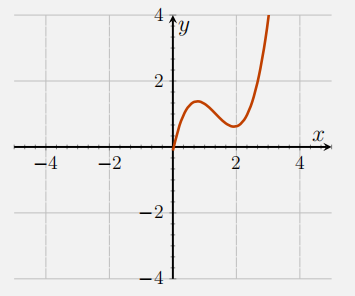1.7: Summary
- Page ID
- 121083
\( \newcommand{\vecs}[1]{\overset { \scriptstyle \rightharpoonup} {\mathbf{#1}} } \)
\( \newcommand{\vecd}[1]{\overset{-\!-\!\rightharpoonup}{\vphantom{a}\smash {#1}}} \)
\( \newcommand{\id}{\mathrm{id}}\) \( \newcommand{\Span}{\mathrm{span}}\)
( \newcommand{\kernel}{\mathrm{null}\,}\) \( \newcommand{\range}{\mathrm{range}\,}\)
\( \newcommand{\RealPart}{\mathrm{Re}}\) \( \newcommand{\ImaginaryPart}{\mathrm{Im}}\)
\( \newcommand{\Argument}{\mathrm{Arg}}\) \( \newcommand{\norm}[1]{\| #1 \|}\)
\( \newcommand{\inner}[2]{\langle #1, #2 \rangle}\)
\( \newcommand{\Span}{\mathrm{span}}\)
\( \newcommand{\id}{\mathrm{id}}\)
\( \newcommand{\Span}{\mathrm{span}}\)
\( \newcommand{\kernel}{\mathrm{null}\,}\)
\( \newcommand{\range}{\mathrm{range}\,}\)
\( \newcommand{\RealPart}{\mathrm{Re}}\)
\( \newcommand{\ImaginaryPart}{\mathrm{Im}}\)
\( \newcommand{\Argument}{\mathrm{Arg}}\)
\( \newcommand{\norm}[1]{\| #1 \|}\)
\( \newcommand{\inner}[2]{\langle #1, #2 \rangle}\)
\( \newcommand{\Span}{\mathrm{span}}\) \( \newcommand{\AA}{\unicode[.8,0]{x212B}}\)
\( \newcommand{\vectorA}[1]{\vec{#1}} % arrow\)
\( \newcommand{\vectorAt}[1]{\vec{\text{#1}}} % arrow\)
\( \newcommand{\vectorB}[1]{\overset { \scriptstyle \rightharpoonup} {\mathbf{#1}} } \)
\( \newcommand{\vectorC}[1]{\textbf{#1}} \)
\( \newcommand{\vectorD}[1]{\overrightarrow{#1}} \)
\( \newcommand{\vectorDt}[1]{\overrightarrow{\text{#1}}} \)
\( \newcommand{\vectE}[1]{\overset{-\!-\!\rightharpoonup}{\vphantom{a}\smash{\mathbf {#1}}}} \)
\( \newcommand{\vecs}[1]{\overset { \scriptstyle \rightharpoonup} {\mathbf{#1}} } \)
\( \newcommand{\vecd}[1]{\overset{-\!-\!\rightharpoonup}{\vphantom{a}\smash {#1}}} \)
- Functions of the form \(f(x)=K \cdot x^{n}\) ( \(n\) a positive integer) are called power functions with coefficient \(K\).
- Power functions with larger powers of \(n\) form graphs that are flatter near the origin and steeper for \(x>1\).
- An even function satisfies \(f(-x)=f(x)\); an odd function satisfies \(f(-x)=\) \(-f(x)\). Identifying even and odd functions can aid in graph sketching.
- The zeros of a function \(f(x)\) are roots of the equation \(f(x)=0\). Identifying the root(s) of a function helps in sketching its graph.
- Polynomials are sums of power functions. Rational functions are ratios of polynomials. By examining the behavior of terms that dominate near and far from the origin, we can obtain a rough sketch of such functions.
- Mathematical models can be used to describe scientific phenomenon. Making reasonable assumptions and observations are necessary for building a successful model. Translating these assumptions and observations into mathematics is the key.
- Hill functions can be transformed into a linear relationship using a change of variables; the plots that result are called Lineweaver-Burk plots.
- The mathematical models explored in this chapter concerned: (a) cell size, based on nutrient balance; (b) energy balance on Earth; (c) biochemical reactions and Michaelis-Menten kinetics; and (d) enzyme-catalyzed reactions and Hill functions.
- Units, while often suppressed in math texts, can be immensely useful in solving application problems. Only quantities with identical units can be added, or compared. Two sides of an equation must have identical units.
- When is \(x^{2}>x^{10}\) ? (a) never (b) always (c) for small \(x\) (d) for large \(x\)
- Why do we make assumptions when we build mathematical models?
- Complete the sketch of the following graph, given that it is

(a) an even function (b) an odd function
- What is the relationship between Michaelis-Menten kinetics and Hill functions?


